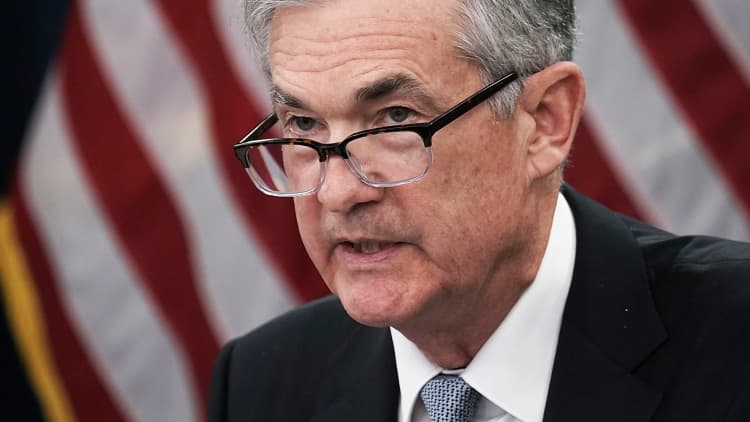
In his first speech on the economy since taking over at the Federal Reserve, Chairman Jerome Powell said Friday that growth is running at a solid pace and continued gradual rate hikes will be necessary.
While acknowledging challenges from low productivity and lagging labor force participation caused in part by the opioid crisis, Powell's remarks were mostly positive about the state of the economy.
"After what at times has been a slow recovery from the financial crisis and the Great Recession, growth has now picked up," the central bank chief said during a speech in Chicago. "The labor market has been strong, and my colleagues and I on the Federal Open Market Committee expect it to remain strong."
The wide-ranging speech addressed a number of issues, though Powell eschewed any broad policy pronouncements.
He expects inflation to continue to move towards the Fed's 2 percent goal, even with wage gains that remain contained. Unemployment likely will drop below 4 percent, and Powell figures that labor force participation could pick up with the right mix of policies.
"In the United States and in many other countries, some of the slowdown in labor productivity growth can be traced to weak investment after the crisis," he said. "Investment has picked up recently in the United States, however, which suggests that capital deepening may pick up as well."
One of the factors he cited for slowing down labor force participation, which remains mired around levels last seen in the late 1970s, is the opioid crisis and the jump in Americans on disability, both of which "may have reduced the supply of prime-age workers."
The FOMC voted in March to increase its benchmark funds rate by a quarter-point, the sixth such move since December 2015. In addition, the Fed is continuing to let a portion of its bond portfolio, or balance sheet, to run off.
Considered in some corners of the market to be more hawkish on rates than his immediate predecessor, Janet Yellen, Powell said it's important to keep moving rates higher despite the lack of inflation.
"It remains the case that raising rates too slowly would make it necessary for monetary policy to tighten abruptly down the road, which could jeopardize the economic expansion," he said. "But raising rates too quickly would increase the risk that inflation would remain persistently below our 2 percent objective. Our path of gradual rate increases is intended to balance these two risks."
Traders expect the Fed to hike rates at least twice more this year, with some speculation that there could be three more. Powell did not address how many increases he thinks will be appropriate.
WATCH: Fed takes wait & see attitude on tariffs



